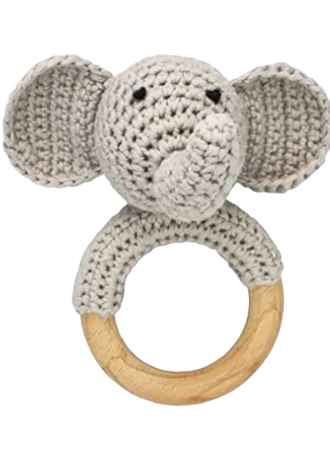Teething can be a difficult and painful time for babies and their parents. Fortunately, there are several remedies available to help ease the discomfort of teething. One popular option is teething rings, which are designed to be bitten and chewed on to help soothe sore gums.
While teething rings can be a helpful tool for parents, there are some safety considerations to keep in mind. One common question is whether or not teething rings can be frozen to provide additional relief. Some parents swear by the effectiveness of frozen teething rings, while others caution against their use.
In this article, we will explore the pros and cons of teething rings, as well as provide some tips for safely using teething rings to help your little one through this challenging time. By the end of this article, you will have a better understanding of whether or not teething rings is a safe and effective option for your baby.
Key Takeaways on Baby Teethers
Teething rings are a popular method to soothe a baby’s sore gums during the teething process.
Not all teething rings can be frozen, so always check the manufacturer’s instructions before freezing.
Possible benefits of teething rings include pain relief, reduced inflammation, and distraction from discomfort.
What are Teething Rings?
Teething rings is a popular method to soothe a baby’s sore gums during the teething process. These rings are typically made of rubber, silicone, or plastic, and can be filled with water or gel. When frozen, they provide a cool and numbing sensation that can help alleviate discomfort and pain.
It’s important to note that not all teething rings can be frozen. Some rings may crack or break when exposed to extreme temperatures, which can be dangerous for your baby. Always check the manufacturer’s instructions before freezing a teething ring.
When using a freezing teething ring, it’s important to monitor your baby closely. Avoid leaving the ring in the freezer for too long, as it can become too hard and may harm your baby’s gums. Also, never freeze a teething ring that contains liquids other than sterilized water, as these liquids can expand and rupture the ring.
If you’re unsure about whether a teething ring can be frozen, consult with your pediatrician or a dental professional. They can provide you with guidance on the best teething relief options for your baby.

Benefits of Teething Rings
Teething can be a difficult time for both babies and parents. Fortunately, teething rings can provide some relief for your little one. Here are some benefits of teething rings:
- Pain relief: Cold temperatures can help numb the gums and provide relief from teething pain.
- Reduced inflammation: The cold temperature can also help reduce inflammation and swelling in the gums.
- Distraction: Chewing on a frozen teething ring can provide a distraction from the discomfort of teething.
However, it’s important to note that not all teething rings are safe to freeze. Be sure to check the manufacturer’s instructions before putting a teething ring in the freezer. Additionally, it’s important to never freeze teething rings that contain liquid, as they can rupture and leak.
When using a frozen teething ring, it’s important to supervise your baby to ensure they don’t accidentally choke on it. Also, be sure to never leave a frozen teething ring in the freezer for too long, as it can become too hard and potentially harm your baby’s delicate gums.

How to Freeze Teething Rings
Teething rings can be a great way to provide relief to a teething baby. However, it is important to do it safely to avoid any potential harm. Here are some tips on how to freeze teething rings:
- Read the instructions: Before freezing any teething ring, make sure to read the manufacturer’s instructions. Some teething rings may not be suitable for freezing.
- Use clean water: If you are using a teething ring that contains water, make sure to use clean water to prevent any contamination.
- Do not overfreeze: It is recommended to freeze teething rings for no more than 30 minutes. Overfreezing can cause the teething ring to become too hard and potentially harm the baby’s gums.
- Check for cracks: Before giving the teething ring to the baby, check for any cracks or damage. If the teething ring is damaged, discard it immediately.
If you do not have a teething ring that can be frozen, you can make your own by wetting a clean washcloth and placing it in the freezer for 30-45 minutes. Make sure to ring out the excess water before freezing to prevent it from becoming too hard.
Remember, while teething rings can provide temporary relief for a teething baby, it is important to also try other methods such as massaging the gums or offering a chilled, but not frozen, teething toy.

Safety Precautions When Using Teething Rings
Teething rings can provide relief for teething babies, but it is important to take safety precautions to ensure your baby’s safety. Here are some safety tips to keep in mind when using teething rings:
- Do not freeze teething rings that are not designed for freezing: Not all teething rings are safe to freeze. Make sure to read the instructions that come with the teething ring to determine if it is safe to freeze.
- Do not freeze teething rings for too long: teething rings for too long can make them too hard and potentially harm your baby’s delicate gums. Make sure to follow the recommended freezing time provided by the manufacturer.
- Always supervise your baby: Never leave your baby alone with a freezing teething ring. Always supervise your baby while they are using the teething ring to ensure they do not choke or hurt themselves.
- Don’t apply teething gel — Teething gels can make your child’s gums number.
- Do not use fluid-filled teethers: Fluid-filled teethers can break and leak, posing a choking hazard to your baby. Stick to solid teething rings that are designed for freezing.
- Never tie the ring around your baby’s neck. Tying the ring around the baby’s neck increases the risk of strangulation.
By following these safety precautions, you can help ensure your baby’s safety while using teething rings. Always consult with your pediatrician if you have any concerns about your baby’s teething process or the safety of teething products.

Alternatives to Teething Rings
While teething rings can be a popular way to soothe a teething baby’s gums, there are other alternatives that can be just as effective. Here are a few options:
- Cool, damp washcloth: Similar to a frozen teething ring, a cool, damp washcloth can provide relief to sore gums. Simply wet a washcloth with cold water, wring it out, and let your baby chew on it. You can also place the washcloth in the fridge for added cooling effect.
- Firm rubber teether: A solid rubber teether can provide a firm surface for your baby to chew on. Look for teethers that are BPA-free and easy to clean. Some teethers even have small bumps or ridges that can massage your baby’s gums.
- Chilled fruit or vegetables: If your baby is eating solid foods, you can offer them chilled or cold foods to gnaw on. Some good options include sliced cucumber, carrot sticks, or frozen berries. Just make sure to supervise your baby closely to prevent choking. You can also give your baby very cold applesauce to help relieve discomfort on your child’s gums.
Remember, every baby is different and what works for one may not work for another. It’s important to experiment with different teething remedies to find what works best for your little one.

FAQs on Freezing Teethers & Teething Toys
Are frozen teethers OK?
Frozen teethers may be too hard for a baby’s delicate gums, posing a risk of injury. Instead of freezing, try chilling the teether in the refrigerator.
Should you freeze a teething ring?
Not all teething rings should be frozen, as frozen items can be too hard for a baby’s sensitive gums. Instead, consider chilling the teething ring in the refrigerator.
What teethers can be put in the freezer?
Teethers made of water or gel-filled materials are often designed to be chilled or put in the freezer. Always check the manufacturer’s instructions before placing a teether in the freezer, as not all teethers are designed to withstand freezing temperatures.
Are teething rings safe?
Toys teethers can be safe when used according to the manufacturer’s instructions and under adult supervision. Ensure that the teether is clean and free of any damage before giving it to your baby. If the teether becomes damaged or punctured, discard it to avoid the risk of choking.

How long can you leave a teething ring in the freezer?
The length of time a teething ring can be left in the freezer depends on the manufacturer’s instructions. However, leaving a teething ring in the freezer for too long may make it too hard for your baby’s gums. Aim for a chilled teething ring rather than a fully frozen one.





